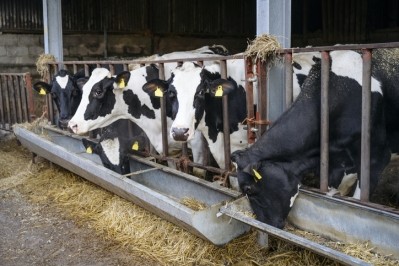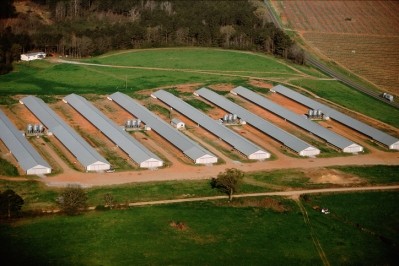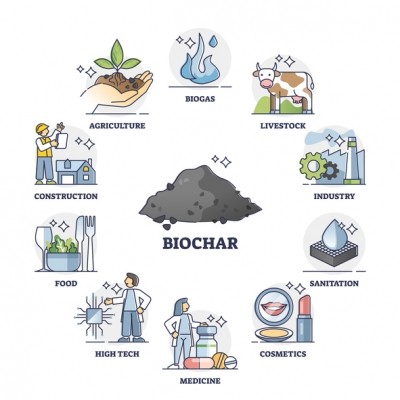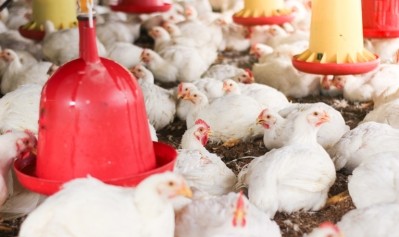Rapeseed meal underperforms compared to peas in broiler nutrition study
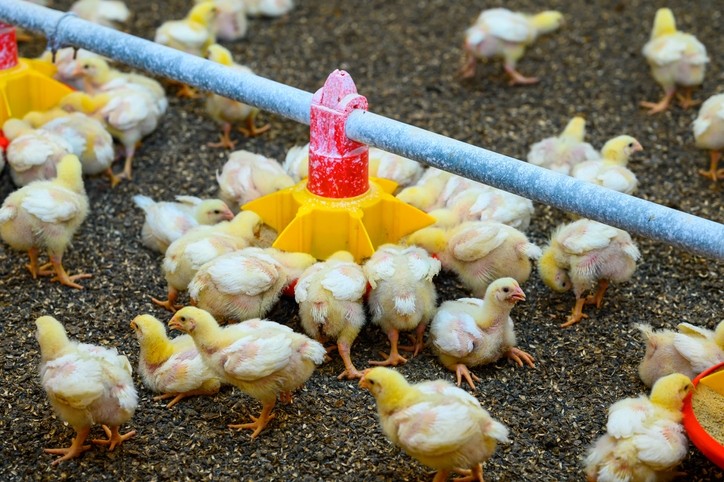
Organic-acid preserved corn and peas can be used in feed with no adverse effects on the broilers, according to the research.
Some markets have a huge dependence on corn and soybean imports for broiler production, the reliance on which can drain foreign exchange reserves and make production costs susceptible to perturbations in supply chains, said the authors.
The team of Polish animal scientists stressed that evaluation of locally grown cereals and alternative protein components, from a nutritional and economic perspective, is, therefore, critical.
And, in that respect, they assessed the interactive effects of the inclusion of wet corn grain preserved with organic acids (CP) and soybean meal (SBM) substitutes, including solvent-extracted low erucic acid, low glucosinolate rapeseed meal (RSM) and peas (PEA), in broiler diets.
Organic acid preservation
The production of corn in northeastern regions of Europe in recent decades has steadily increased, but the climate conditions dictate that the harvested grain contains about 250–320g kg moisture and it has to be artificially dried to reduce the moisture content below 130g/kg to prevent mold formation during storage, they reported.
"Drying processes increase the costs associated with feed preparation; moreover, they can have a deleterious effect on starch and protein digestibility (Kaczmarek et al., 2014) and on the metabolizable energy value of corn (M´etayer et al., 2009).
"It has been known for decades that the application of various organic acids to corn grain at harvest effectively suppresses the growth of mold during storage and thus restricts the potential production and detrimental effects of mycotoxins, which are the most common corn-derived contaminants in poultry diets (Jones et al., 1974; Higgins and Brinkhaus, 1999).
"Economically, the chemical preservation of corn with organic acids is quite competitive with drying and provides an opportunity for small farmers to use their own grains in cattle, swine and poultry rations (Jones et al., 1974).
"It has been documented that some organic acids that are effective against fungi have additional antibacterial activities; however, substantially more information is available on the effects of these acids on the microbiome of the gastrointestinal tract in swine than in poultry (Dibner and Buttin, 2002). It was reported that formic acid-propionic acid mixtures are particularly effective against acid-intolerant species, such as E. coli, Salmonella and Campylobacter (Iba and Berchieri, 1995; Khan and Iqbal, 2016)."
SBM substitutes
Locally produced plant protein feedstuffs, such as peas or solvent-extracted rapeseed meal (RSM), are often used to partly replace soybean meal (SBM) in poultry diets, added the scientists.
The use of these SBM substitutes has an impact on gut microbiota diversity and activity in broilers (Konieczka et al., 2018 and 2019), they remarked.
"Organic acids added to the feed mixtures may help to control the balance of the intestinal microbiota, which is a key aspect in achieving feed efficiency (FEFANA, 2014). The interactive effects of organic acids introduced with chemically preserved high-moisture corn and alternative sources of protein on the microbiota activity of broilers are unknown.
"Therefore, the aim of this study was to examine the effects of using high-moisture corn preserved with a mixture of propionic and formic acids in diets containing RSM or peas on the activity of ileal and caecal microbiota and growth performance of broiler chickens."
The study
Writing in Animal Feed Science and Technology, they described the methodology used.
A total of 171 eight-day-old female Ross 308 broilers were distributed into nine groups, each consisting of 19 birds kept in individual cages.
During the 27-day feeding period, the birds received wheat-corn-SBM diets and were arranged in a 3 × 3 factorial design; the factors included corn treatments: CP, heat-dried corn moisture-reconstituted with water (CDW) or with preservative (CDP) and three protein sources (SBM exclusively or mixed with RSM or PEA at the level of 150/200 g/kg diet.
The results
The feed intake and body weight gain declined in birds fed the RSM diet, while corn treatments had no significant effects on the performance of the broilers.
The RSM diets increased bacterial enzyme activity in the ileal and caecal digesta and decreased butyrate, acetate and total short-chain fatty acid (SCFA) concentrations in the caecal digesta) compared with the values detected in the case of the SBM and PEA diets, found the researchers.
The corn diets had negligible effects on the bacterial enzyme activity of ileal and caecal microbiota but induced a decline in lactate concentrations in the ileum in the case of the diets with CP and CDP corn, they found
“Our findings indicate that peas at the level of 150/200 g/kg are a good alternative to SBM, while diets with the same level of RSM may have an adverse effect on growth performance and acetate and butyrate production in the caecum,” said the authors.
They concluded that high moisture corn preserved with organic acids and peas as an alternative protein source can be used in broiler diets at the levels of 300g/kg and 200 g/kg diet, respectively, with no adverse effects on the growth performance and physiological status of the gut.
"Both feeds provide an opportunity to use locally available grains in poultry rations. However, further research is needed to investigate the potential of processing diets containing high moisture corn using an extruder to increase their practical application."
Source: Animal Feed Science and Technology
DOI: https://doi.org/10.1016/j.anifeedsci.2021.115063
Title: Effects of high-moisture corn preserved with organic acids combined with rapeseed meal and peas on performance and gut microbiota activity of broiler chickens
Authors: P Konieczka, D Józefiak, M Kinsner, S Smulikowska
